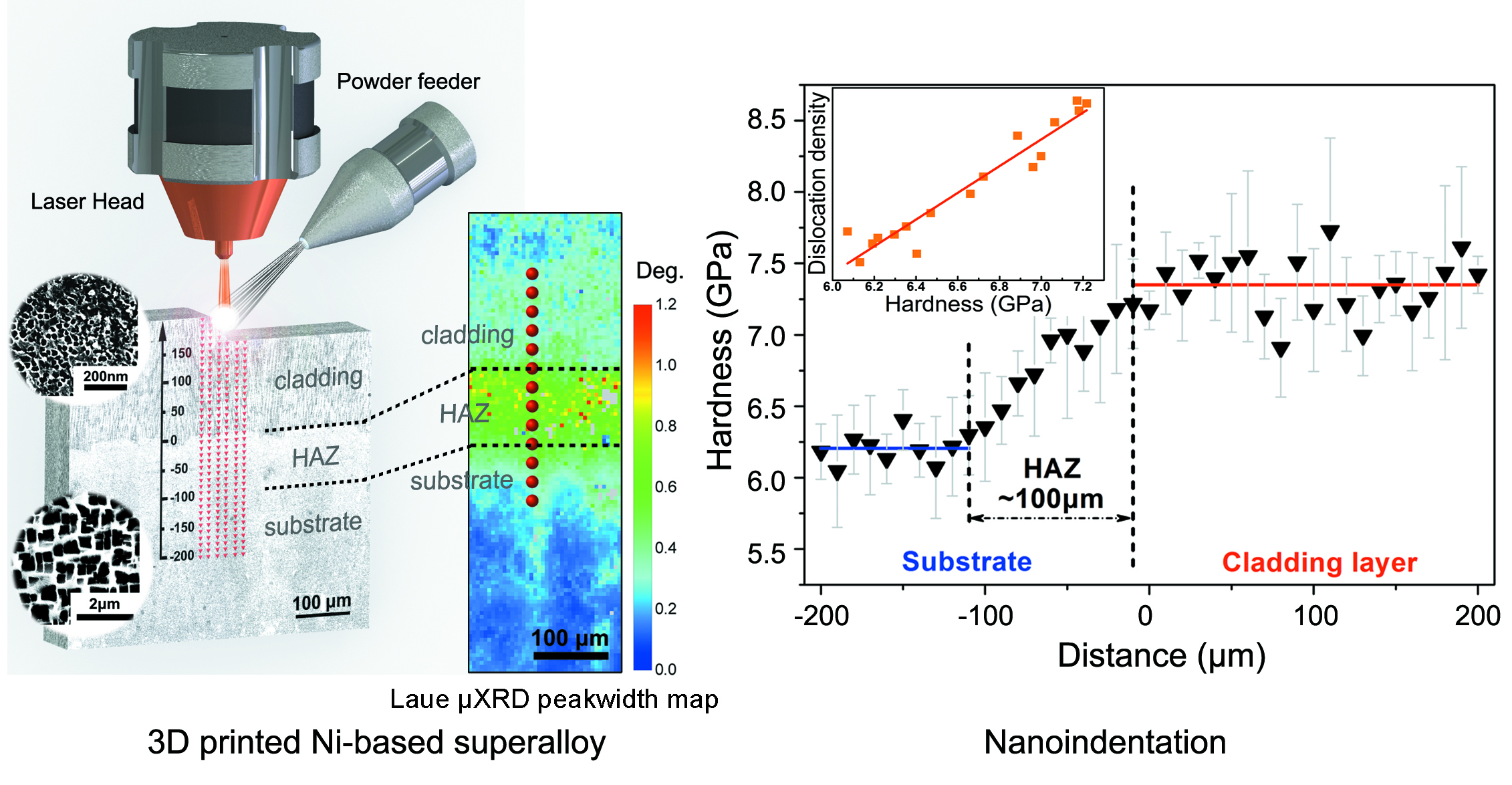Laser 3D printing is a promising way to repair machine parts (such as jet-engine turbine blades) made of single-crystal nickel-based superalloys. The laser locally melts the part surface while a powder with similar chemical composition is injected into the molten pool. When the laser is moved away, rapid solidification occurs, preserving the substrate’s crystal orientation. An epitaxial cladding region is thus deposited layer by layer, preserving the single-crystal nature of the substrate. However, microstructural inhomogeneities generated by the high-power laser could affect mechanical properties and are a major reliability concern.
To probe the microstructure at the epitaxial interface, researchers from Xi’an Jiaotong University and the ALS employed x-ray Laue microdiffraction at ALS Beamline 12.3.2. They found that the laser 3D-printed nickel-based superalloy is stronger but more brittle than the cast substrate, with a transitional region in between called the “heat-affected zone.” The hardness gradient observed through this zone resulted from an increase in dislocation density, indicated by a broadening of the Laue microdiffraction patterns. On the other hand, the hardening mechanism in the cladding region was shown to originate not only from the high dislocation density but also—and more importantly—from interactions between phases in that layer’s fine microstructure.
The hardening mechanisms unraveled in this study shed light on how the selection of laser-beam parameters can affect the reliability of laser 3D-printed repairs. The results bring us one step closer to the industrial application of 3D printing—a cost-effective way to repair expensive damaged parts—in the aeronautical industry.

Work performed at ALS Beamline 12.3.2.
D. Qian, A. Zhang, J. Zhu, Y. Li, W. Zhu, B. Qi, N. Tamura, D. Li, Z. Song, and K. Chen, “Hardness and microstructural inhomogeneity at the epitaxial interface of laser 3D-printed Ni-based superalloy,” Appl. Phys. Lett. 109, 101907 (2016).